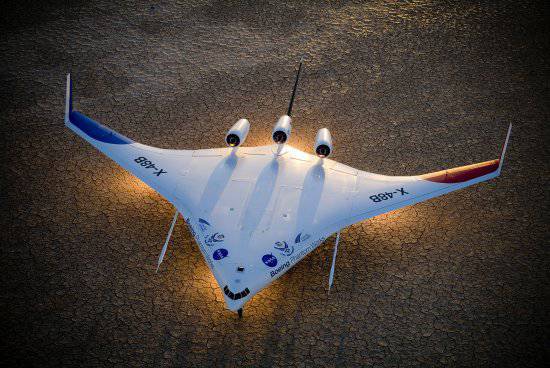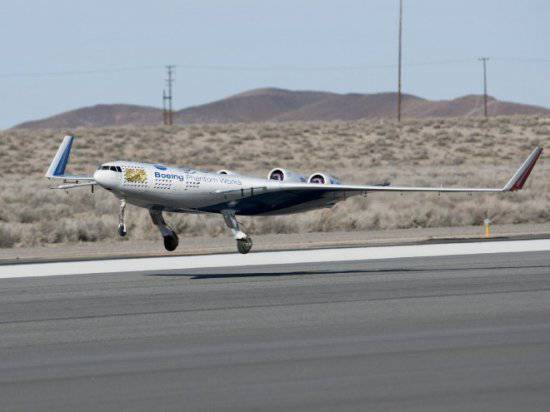X-48B: eighty flights, invaluable data
Flying Lab - X-48B allows NASA to test and evaluate key technologies. Passed tests revealed the flight and flight qualities of this type of aircraft at speeds characteristic of take-off and landing.
“This project is a huge success,” says Fay Collier, ERA project manager. "The bottom line: the team proved its ability to safely fly a tailless aircraft at low speeds." Until recently, Collier was the principal investigator of NASA on the project of subsonic wings with unchanged geometry, which marked the beginning of a relationship with Boeing on the development of basic technologies X-48B. The ERA project is part of NASA's research program to develop promising technologies before transferring them to industry.
NASA and Boeing completed the first stage of the flight tests of the reduced model X-48B, made according to the scheme of the flying wing
19 March The 2010 team completed the 80 th and final flight of the first phase of the project, which was launched almost 3 a year ago on July 20 2007. In addition to NASA and Boeing, the team includes: the British company Cranfield Aerospace and the Dayton Research Laboratory of the US Air Force.
In the middle of 2000-x, NASA determined that low-speed flight control with a given wing geometry is a complex design task. This problem and the task of building a non-cylindrical hermetic fuselage have since been the starting points of research. The ultimate goal is the development of environmentally friendly aircraft technology that produce less noise, burn less fuel, emit less harmful gases.
“These 80 research missions provided engineers with invaluable data that allowed the team to complete a full cycle of initial tests,” said Tim Risch [Tim Risch, “Drydensky” project manager X-48B]. The teams focused on three main objectives: expanding the range of operational flight modes, determining flight performance, and checking the limiting software of the aircraft control system.
The first goal [range expansion] was implemented on 20 flights for one year. In these flights, the aircraft conducted various air maneuvers to determine the full flight capabilities, overall stability, and flight characteristics.
The second objective [flight performance] focuses on crash testing to determine the boundaries of a controlled flight, maneuvering with the engine off to determine aircraft control in cases of failure of one or more engines, identifying flight parameters to assess how movements of flight control rudders affect aircraft behavior .
On 52 flights between July 2008 and December, 2009 engineers determined the aircraft’s dynamic characteristics by sending computer commands to the X-48B flight control wheels and measuring how quickly the aircraft responded to the input signal.
The third and most important goal was a “fight” with a limiter when the remote pilot deliberately exceeded the established controllability limits [for example, angle of attack, lateral slip angle and acceleration] to check whether the aircraft’s computer could keep the flight stable. Eight test flights confirmed the operability of software limiters and gave the team confidence that a reliable, flexible and safe control system could be developed for aircraft of this type.
The X-48B tests will continue this year, after installing and testing a new computer. The next series of flight tests will focus on additional research on the identification of flight parameters.
NASA has a second hybrid wing aircraft, the X-48C, whose noise performance is even lower than the X-48B. His flight tests are being prepared to determine other controllability factors.


Information